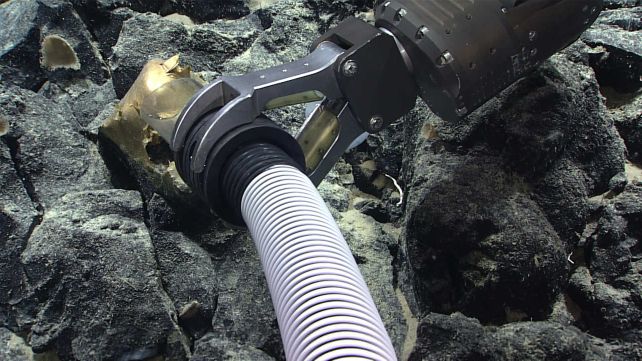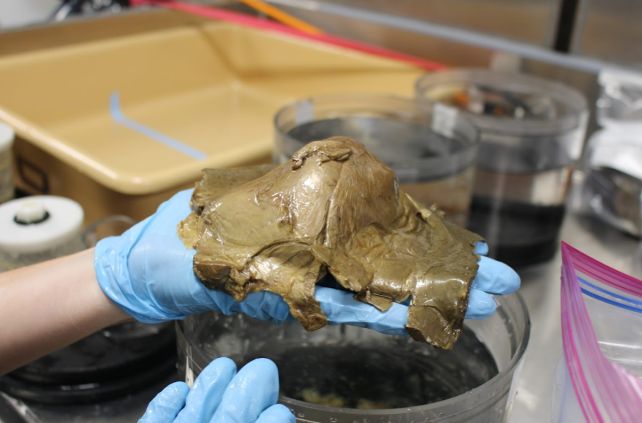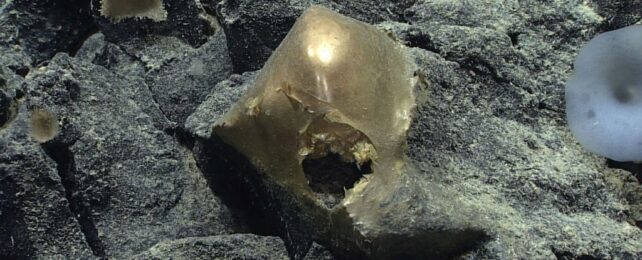At around 3,300 meters (2 miles) below the surface off the coast of Alaska, where the warm light of the Sun never penetrates, an NOAA Ocean Exploration remotely operated underwater vehicle came across a strange, golden orb.
It was "tightly adhered" to a rock dotted with white sponges, measuring around 10 centimeters (4 inches) across with a hole in one side.
It's not entirely clear what the mysterious orb might be. Initial suggestions from the researchers conducting the livestream of the dive included an egg casing from a mystery species, a dead sponge, or a coral.
"I don't know what to make of that," said one of the researchers on the 30 August livestream.
"It's definitely got a big old hole in it, so something either tried to get in or tried to get out," another speculated.

"I just hope when we poke it, something doesn't decide to come out," one researcher said. "It's like the beginning of a horror movie."
Whatever deep horror that might be, it might yet have some growing to do. As reported in The Guardian, the hypothesis favored by scientists currently thinks something may have hatched from the golden case. Something not exactly tiny.
"We're going with egg because of the texture. It felt fleshy and it doesn't have any obvious anatomy. It has a hole in it that suggests something has come in or gone out. But it doesn't look like any egg I've ever seen," deep-sea ecologist Kerry Howell of the University of Plymouth in the UK told the paper.
"If it is an egg, the really interesting question is whose egg is it. It's quite big. That's not a small fish egg. That's a sizable thing."
Using a robotic arm, the researchers gently nudged the object, determining that it was quite soft, before collecting it via suction for further study. DNA analysis will be conducted to pin down the organism responsible for its creation.

The fact the 'egg' was on its own is almost as intriguing as its size. Typically, oviparous animals lay eggs in clutches.
So if the object is an egg, there's something unusual about it. Which is quite marvelous, really: whatever it is, the orb has something new to tell us about the deep ocean, and the diverse life that thrives therein.
There's a lot that happens in the inhospitable ocean depths that we don't yet understand. Crushing pressures and freezing temperatures are just two factors that have kept humanity from exploring widely. However, with remotely operated vehicles acting as a proxy, the ocean is gradually revealing its secrets. Including how mysterious deep ocean species procreate.

"Isn't the deep sea so delightfully strange?" says exploration coordinator Sam Candio of NOAA Ocean Exploration.
"While we were able to collect the 'golden orb' and bring it onto the ship, we still are not able to identify it beyond the fact that it is biological in origin. We likely won't learn more until we are able to get it into a laboratory setting where we can continue to pull from the collective expertise of the scientific community with more sophisticated tools than we are able to maintain on the ship.
"While somewhat humbling to be stumped by this finding, it serves as a reminder of how little we know about our own planet and how much is left to learn and appreciate about our ocean."
This discovery is part of NOAA's ongoing deep sea exploration in Alaska. Check out their livestream cameras for more amazing underwater curiosities.
